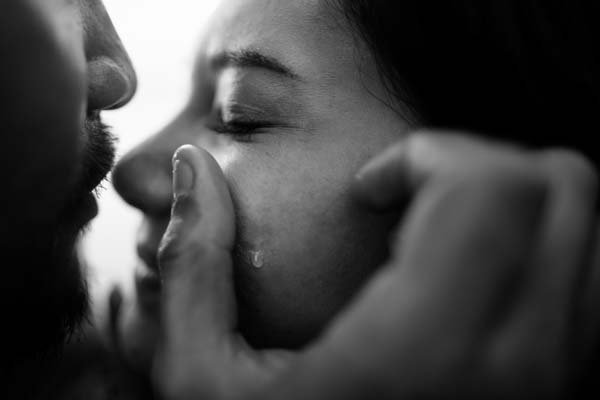Conflict is an unavoidable part of any intimate relationship. How couples handle these conflicts, however, can either strengthen their bond or cause significant emotional damage. One crucial aspect of navigating conflicts is understanding and owning the way you fight. This involves recognizing your conflict style and its impact on your partner. In this blog, we will focus on the dynamic between withdrawers and their anxious attachment partners, and how owning your behavior can lead to healthier, more productive conflicts.
The Dynamic of Withdrawal and Anxious Attachment
In many relationships, conflicts can often be traced back to differences in attachment styles. Two common attachment styles are:
Withdrawers: Individuals who tend to pull away or shut down during conflicts. They might retreat into silence or physically remove themselves from the situation, believing this will prevent further escalation or provide space to think.
Anxiously Attached Partners: Individuals who crave closeness and reassurance during conflicts. They often seek immediate resolution and can become increasingly anxious or upset when faced with withdrawal from their partner.
This dynamic can create a destructive cycle where the more one partner withdraws, the more the other seeks reassurance, leading to intensified emotions and unresolved conflicts.
The Impact of Withdrawal
For withdrawers, it’s essential to understand how their behavior impacts their anxiously attached partners. Withdrawal can be particularly wounding because:
It Feels Like Rejection: When a partner withdraws, the anxiously attached partner often interprets this as rejection or abandonment, triggering deep-seated fears and insecurities.
It Escalates Anxiety: Instead of calming the situation, withdrawal typically increases the anxiously attached partner’s anxiety, leading to more desperate attempts for connection.
It Hinders Resolution: Withdrawal prevents open communication and resolution of the conflict, leaving issues unresolved and tensions simmering beneath the surface.
Owning Your Withdrawal
Owning your way of fighting means acknowledging the impact of your behavior and taking steps to address it. For withdrawers, this involves:
Acknowledging the Impact: Recognize that your withdrawal can be deeply painful for your partner and can exacerbate their anxiety.
Communicating Your Needs: Instead of shutting down, express your need for space in a way that reassures your partner. For example, “I need a moment to collect my thoughts, but I will come back so we can talk about this.”
Staying Engaged: Make a conscious effort to stay engaged in the conversation, even if it’s uncomfortable. This might mean taking short breaks but committing to returning and continuing the dialogue.
Building Emotional Resilience: Work on developing your emotional resilience so you can stay present during conflicts without feeling overwhelmed. Techniques such as deep breathing, mindfulness, and self-soothing can be helpful.
Supporting Your Anxiously Attached Partner
In addition to owning your withdrawal, it’s important to understand and support your anxiously attached partner. This involves:
Providing Reassurance: Regularly reassure your partner of your love and commitment, especially during conflicts. Simple statements like “I’m not leaving; I just need a moment to think” can go a long way.
Active Listening: Show that you are listening and valuing their feelings. Reflect back what they are saying and validate their emotions. For example, “I understand that you feel scared when I walk away.”
Compromise and Collaboration: Work together to find a balance that meets both of your needs. This might mean agreeing on a specific time to revisit the conversation after a break.
Encouraging Change in Conflict Dynamics
Transforming the way you fight requires both partners to be committed to change. Here are some strategies to encourage healthier conflict dynamics:
Identify Patterns: Recognize and discuss the patterns in your conflicts. How does the withdrawal-anxiety cycle play out in your relationship? Awareness is the first step to change.
Set Ground Rules: Establish ground rules for conflicts. For example, agree that it’s okay to take a break, but commit to returning and resolving the issue.
Practice Empathy: Try to see the conflict from your partner’s perspective. What are their fears and needs? How can you address them without compromising your own needs?
Seek Professional Help: Sometimes, changing conflict dynamics requires professional guidance. A couples therapist can help you understand your patterns and develop healthier ways to communicate and resolve conflicts.
Owning the way you fight is a crucial step towards healthier and more productive conflicts. For withdrawers, this means recognizing the impact of their behavior on their anxiously attached partners and taking steps to stay engaged and supportive during conflicts. By understanding and addressing the withdrawal-anxiety dynamic, couples can break the cycle of conflict and build a stronger, more resilient relationship.
Remember, conflict is not the enemy in a relationship; it’s how you handle it that matters. By owning your way of fighting and committing to positive change, you can transform conflicts into opportunities for growth and deeper connection.
If you need a trained and experienced therapist to help you sort out a really stuck spot in your relationship and are in the Minneapolis area, I can help. If you are looking for video visits, that is an option if you are anywhere in Minnesota. If you want to know more about dynamics in relationships, look at my Marriage Counseling page. If you are in Minnesota, I can help in person or on video. Contact me by phone: 612-230-7171 or email through my contact page. Or you can click on the button below and self-schedule a time to talk by phone or video.



